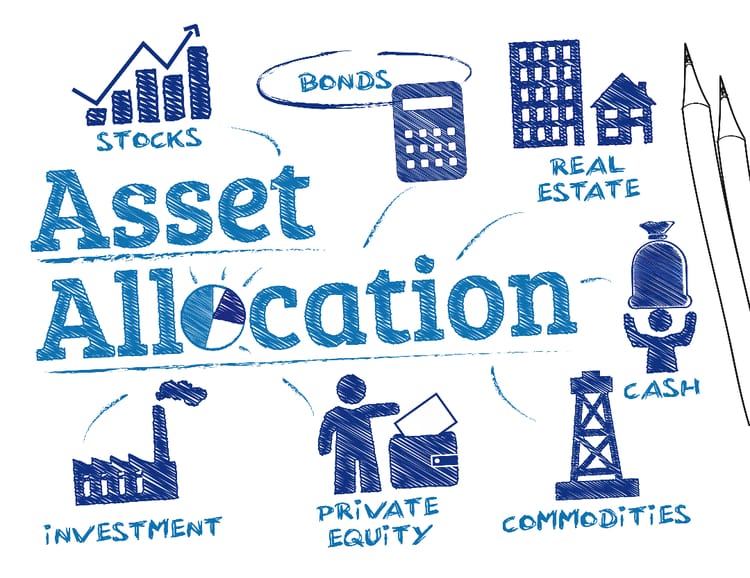Making Effective Decisions About the Best Investments Long Term
When investing money for an extended period, a person must know the features of long-term investments. Otherwise, they risk not getting significant returns if they react to all temporary market fluctuations. Or they will buy assets that are not suitable for long-term investing strategies.
If you know how to choose the best investments long term, you will be able to reap impressive rewards after several years. In this article, we will reveal the secrets of successful investing for 5 or more years. You will learn about the advantages of this type of investing in comparison with short-term investing. If you have enough patience, you can get an excellent source of passive income. It will bring you financial stability and the ability to scale your investments. Moreover, you can combine different types of investments in your portfolio. This gives you the freedom to find the best solution for placing your capital in various assets.
What Are Long-Term Investments?
Long-term investments are investments of capital in assets for a long period, from 1 year [1] or more. The specific holding period of assets depends on the investment time horizon or the time when the investor will need their capital for some other purpose. This time horizon can extend from the short term to the long term.
When starting to invest their capital, a person must decide what type of returns they want to receive. If they expect quick returns, they should select highly volatile assets because they allow earning a decent amount of money on significant price fluctuations. However, such an investment strategy is risky because the probability of losing money due to a significant drop in asset prices is also quite high.
Unlike short-term investing, long-term investing does not provide quick returns because the investor places their money for several years or even decades. Some investments can bring the greatest profit only after decades. But if you have the patience to wait for this profit, it will reward you with substantial growth. Thus, long-term investing is investing money in assets or projects that will grow in value over time. Their value may increase due to many reasons:
- Increase in the value of natural resources on the world market due to their scarcity;
- Rising demand for a promising technology;
- An impressive growth of the money thanks to compound interest, etc.
The best way to invest long term is to buy stocks of promising companies, real estate in attractive regions of the world, highly rated bonds, etc. Below, you will find detailed tips on how to invest long term to make significant profits.
Due to its stability, Europe is an excellent region for long-term investing. This is evidenced by the projected real GDP growth for 2025‒2027. According to the predictions of the the European Central Bank [2], it will range from 0.9% in 2025 to 1.3% in 2027. Therefore, you can achieve solid success by mastering the key lessons of long-term investing.
Tips for Long-Term Investment Success
If you want to achieve cost-effectiveness in the placement of your capital, consider long-term investments. Frequently buying and selling assets, you will lose much money on transaction fees. Moreover, the capital gains tax rate for the sale of securities you held for up to a year or more varies. You will pay much less tax if you hold securities for a long time. In some European countries, the capital gains tax [3] for the sale of securities that an investor holds for up to a year reaches 36%-42% (Netherlands, Norway, Denmark). In comparison, the sale of long-held shares may not be taxed (in countries such as Greece, Belgium, Slovakia, Cyprus, etc.). Knowing these and many other nuances, an investor can choose the conditions for the best investments long term. So, to start competently placing your investments for the long term, listen to the tip.

Get Your Finances in Order
Investing for long-term growth assumes that you have free capital that you will not need in the near future. An important condition for such investments is that you should not take money out of them. That is why you should assess your financial situation for stability and sufficient reserves that you can use in an emergency. You should not invest money for the long term under the following circumstances:
- If you have outstanding debt with high interest rates. High-interest loans are dangerous because if you do not maintain financial discipline, the debt will grow quickly. Therefore, it is better to pay it off before you direct part of your resources to long-term investments.
- If you do not have an emergency fund. No matter how stable a person's life is today, they may face unexpected challenges tomorrow. Therefore, they should have some reserve money to cope with unforeseen situations. Experts advise stocking up on reserves that will be sufficient to cover six months of living expenses. If you do not have this money, you will have to take it out of long-term investments in a crisis situation, which will not give you the expected returns.
Know Your Time Horizon
A time horizon [4] is the point in time when the money you invested in a particular project or asset may be needed for other purposes. Each investor has their time horizon, which directly affects the choice of the best investment for long term:
- Someone invested money to make a profit for their child's education. In this case, when the child reaches a certain age, this money will be needed to pay for tuition at a university or college.
- Others invest for better retirement conditions. In old age, they will want to return their money to ensure a higher standard of living.
- Still, others have sufficient capital, so their time horizon can be very long. With the help of long-term investments, they can show their care for their children and grandchildren. Thanks to compound interest, their descendants will receive even more capital.
So, decide when you may need the money you want to invest. This time horizon directly influences the choice of specific assets and projects for investment.
Pick a Strategy and Stick with It
One of the key dangers on the path of long-term investing is the ups and downs of the market. If an investor reacts in a panic to them, they will not succeed with this type of investment. Long-term investors must think in terms of cycles, not momentary changes. Therefore, sticking to one strategy will be your guide in turbulent times. If you know how to long term invest, you will be calm even when others succumb to panic in the market.
This recommendation also applies to the composition of your investment portfolio. Find an effective mix of stocks, bonds, real estate, and other assets in your portfolio. Don't be tempted to abandon it in favor of short-term gains that may arise in the market.
Understand Investing Risks
Any predictions about expected returns are based on some probability. This means there is a risk they will be wrong, and the investor will not receive the profit or even suffer losses. Therefore, the best long term investment strategy should take into account many risks that an investor may face:
- Price fluctuation. Although temporary price fluctuations are not important for long-term investing, the value of an asset can fall irreversibly in some cases.
- Liquidity risk. Not all assets can be sold quickly if you need money. For example, if you invested in real estate, selling it may take several years. Therefore, when you urgently need money, you will not be able to get it from certain investments quickly.
- Inflation. If inflation is high and fast, the purchasing power of your money will decrease significantly over several years of investing. This means the profit you receive will not have the expected effect.
Take the Long View
Long-term investing is fundamentally different from active trading. You must look ahead for many years and not succumb to market fluctuations. This may not be easy when you see how traders can earn a lot by constantly selling and buying assets. However, such intensive activity is not suitable for everyone. Buy-and-hold strategies are more versatile since they involve less risk. But for this, you need to take the long view, which refuses immediate benefits in favor of greater ones but distant in time.
Diversify
Diversifying your investment portfolio will save you in many situations if you have a long-term time horizon. Unanticipated events can negatively affect the value of one of your assets. Economic upheavals often lead to a market downturn, which can decrease investment returns. To avoid putting all your investments at risk, you should diversify them. This way, there is a better chance that the price of one of them will remain stable or even increase.
Reinvest Dividends
Dividends are the profit you get from investing your money in a stock or fund. You can use them as a regular additional income that you receive. However, do not spend them on buying things, entertainment, or traveling. It will be more effective to reinvest them [5] and buy more shares. In this case, you will get excellent savings because you will not pay any commissions or fees. If you buy additional shares, the dividends will be higher next time. Doing this consistently, you will actually experience the benefits of compounding growth [6]. And the value of your investment portfolio will constantly increase.
Mind the Costs of Investing
One of the benefits of a long term investment strategy is saving on taxes and brokerage fees. Since investors make fewer transactions, they pay less in fees. Moreover, capital gains taxes for stocks held for a long time are lower. If you compound your returns in a bank account, you will not have to pay taxes during this time.
However, you need to consider these costs when making smart investing decisions. These fees and taxes reduce your profits and delay achieving long-term financial goals. Compare the conditions of different brokers and choose the best ones, even if they seem roughly similar to others. Over the years of investing, what seems like a small fee can accumulate into a considerable amount.
Review Your Strategy Regularly
Long-term investments do not require close and constant attention to the market as short-term ones do. However, this does not mean that, having bought shares or other securities, you can forget about them and only receive your dividends. Market conditions are constantly changing, so you need to monitor their trajectory to adjust your investment portfolio on time. Perhaps you will choose to rebalance your portfolio if the market is too volatile. You must analyze whether your investment strategy provides the profit you expect to achieve your financial goals. You can also discover new opportunities that will help you optimize your investment portfolio.
Any investor needs to monitor economic indicators, financial reports, political news, and legislative changes. Since you are investing your money for a long period, legislation, including tax one, may change during this time. In this case, your investment returns may decrease or increase. And to ensure that your portfolio meets your long-term financial goals, you may also need to rebalance it.
Summary
Long-term investing is one of the popular and effective wealth creation strategies. Thanks to compound interest, your returns will grow exponentially. Still, the investor must be patient, cool-headed, and persistent in their desire to achieve a long-term financial goal. They will need patience because they will not receive such quick returns as with short-term investing.
Distancing yourself from your emotions is important during economic turmoil and panic in the markets. In such periods, many investors succumb to panic and sell assets without waiting for a profit. Perseverance is essential to invest dividends in new shares and not spend them on unnecessary purchases. If you have all these qualities and strictly follow long term investment tips, long-term investing is ideal for you. In this case, you can go through this long journey without effort. It starts with buying a small amount of stocks, bonds, real estate, etc., and ends with a significant amount of capital you can use to achieve your global financial goals.
Frequently Asked Questions
What are some common types of long-term investments?
There are several types of long-term investments that people commonly choose to invest in: stocks, bonds, real estate, mutual funds, exchange-traded funds, retirement accounts.
How long is considered long-term investing?
The length of time considered as "long-term" investing can vary depending on the individual and the investment type. Generally, long-term investing refers to holding an investment for a period of five years or more.
What are the benefits of long-term investing?
One of the main benefits is the potential for compounding returns over time. Another key benefit is that long-term investing can help to reduce the impact of short-term market fluctuations and benefit from potential long-term growth.
How do I manage risk in long-term investing?
One way to manage risk is to diversify your portfolio across different types of assets as well as across different industries and regions. This can help mitigate the impact of a single investment declining in value. Another way to manage risk is to regularly review and rebalance your portfolio, selling assets that have become overvalued and reinvesting in undervalued assets. Also, it's important to stay up-to-date with economic and market trends that could impact your investments and to adjust your strategy accordingly.
How can I get started with long-term investing?
The first step is to set clear investment goals and determine your risk tolerance. Once you have a clear picture of what you want to achieve and how much risk you're willing to take, it's time to choose your investments. At this point, it may be a good idea to do extensive research and/or consider working with a financial advisor to make sure you select investments that are right for you.
List of References
- Source: investopedia.com
- Source: ecb.europa.eu
- Source: taxfoundation.org
- Source: investopedia.com
- Source: investopedia.com
- Source: investopedia.com






